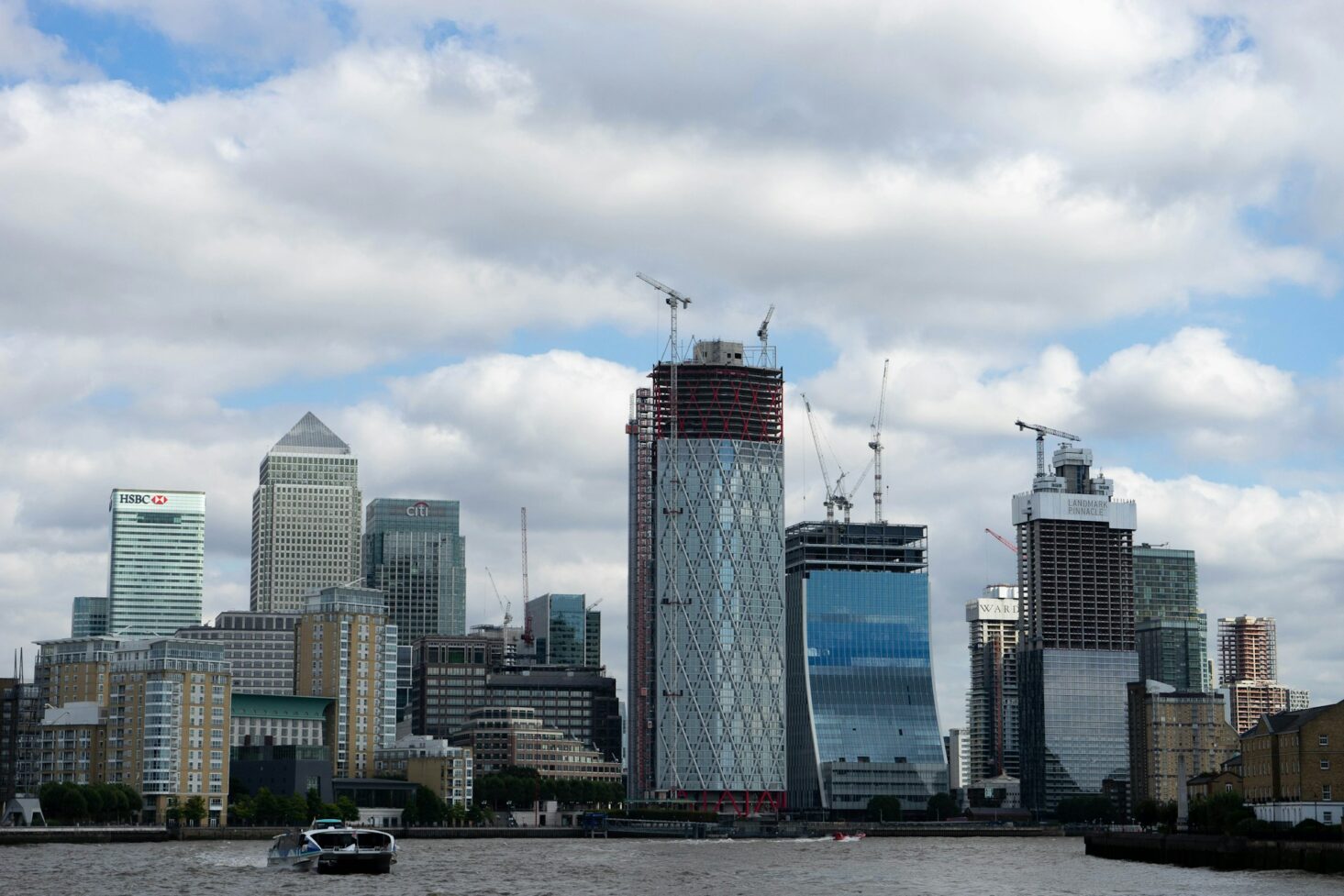
Canary Wharf’s Maritime History: From Docks To Financial Hub
Canary Wharf, now a bustling financial district synonymous with towering skyscrapers and modernity, holds within its concrete and steel embrace a rich maritime history that traces its evolution from thriving docks to a global financial hub.
As we navigate the labyrinth of Canary Wharfs maritime history, it’s essential to delve into the roots that connect this iconic district to its maritime past, revealing the intriguing journey that has shaped its present identity.
Nestled amid the gleaming structures, Canary Wharf’s iconic buildings stand as silent sentinels bearing witness to a bygone era when these docks were a hub of maritime activity. Each building, with its architectural magnificence, echoes the stories of commerce and trade that once echoed through the docks.
Exploring these structures becomes a journey through time, unveiling the architectural evolution that encapsulates both the district’s maritime legacy and its modern skyline.
The metamorphosis of Canary Wharf is not confined to concrete and glass; it extends to the meticulously designed parks and green spaces that intersperse the urban landscape. These green oases, while providing a serene escape from the corporate hustle, also offer glimpses into the district’s maritime past.
The careful preservation of certain elements of the docks within these green spaces serves as a poignant reminder of the area’s historic significance, creating a harmonious blend of nature and heritage.
Canary Wharf’s metamorphosis isn’t limited to corporate pursuits—it extends to a world of retail therapy. Amidst the high-powered financial transactions, the allure of shopping at Canary Wharf provides a contemporary contrast to its maritime history.
The modern shopping precincts, housing luxury brands and eclectic boutiques, have risen from the shadows of warehouses that once stored goods transported through the bustling docks. This evolution encapsulates Canary Wharf’s ability to seamlessly blend its past with the present.
Yet, within this thriving financial ecosystem, hidden gems remain—narratives and artifacts that offer a glimpse into the district’s maritime soul. Uncovering these hidden gems in Canary Wharf becomes an exploration of the district’s layered identity, where remnants of its maritime heritage coexist with the contemporary vibrancy.
The Maritime History of Canary Wharf
From its humble beginnings as a thriving dockyard, Canary Wharf has evolved into an international financial hub. Join me as we dive into the maritime history of this iconic area. Discover the significance of Canary Wharf’s docks and their pivotal role in shaping the shipping industry.
Prepare to embark on a captivating journey through time, uncovering the fascinating transformation of Canary Wharf from a bustling maritime center to a global powerhouse of finance.
The Importance of Canary Wharf’s Docks
The importance of Canary Wharf’s docks can be observed in the crucial role they played in the development and transformation of the area into a financial hub. These docks served as a major shipping hub for London, facilitating trade and commerce.
They allowed for the smooth transshipment of goods, which in turn boosted economic growth and attracted businesses to the area. The presence of the docks also had a direct impact on the physical landscape of Canary Wharf, with warehouses and infrastructure specifically catering to the maritime industry.
To truly appreciate the historical and economic significance of Canary Wharf, understanding the importance of its docks is essential.
Role of Canary Wharf in the Shipping Industry
Canary Wharf has played an indispensable role in the shipping industry, serving as a major port for London. Thanks to its strategic location on the River Thames, it has enjoyed convenient access to international trade routes.
The docks at Canary Wharf boasted cutting-edge infrastructure and top-notch facilities, making it possible to accommodate large cargo ships and ensuring the smooth and efficient loading and unloading processes.
Consequently, the shipping industry flourished at Canary Wharf, attracting businesses engaged in shipping, logistics, and maritime services. This, in turn, resulted in remarkable economic growth and abundant job opportunities in the region.
Undoubtedly, the crucial role of Canary Wharf in the shipping industry laid the groundwork for its subsequent transformation into a thriving financial hub.
Pro-tip: While visiting Canary Wharf, be sure to take a leisurely stroll along the historic docks to fully appreciate the area’s rich maritime history.
Transformation into a Financial Hub
Canary Wharf’s transformation into a financial hub is a fascinating journey full of significant factors and the rise of the banking sector. From its humble origins as docks to its current status as a thriving financial center, the transition is worth examining.
This section delves into the factors that led to this shift and the remarkable rise of the banking sector in this iconic area. Get ready to explore the intriguing story behind Canary Wharf’s evolution into a buzzing financial hub.
Factors Leading to the Shift
Factors Leading to the Shift of Canary Wharf from a maritime hub to a financial center can be attributed to several key factors. Advancements in technology and global trade patterns led to a decline in shipping activities, prompting the need for a new economic focus.
Government policies promoting the growth of the financial sector and the availability of skilled labor attracted financial institutions to Canary Wharf. The proximity to the City of London also played a crucial role in the shift.
The combination of these factors allowed Canary Wharf to transform into a thriving financial hub, contributing to economic growth and job opportunities in the area.
The Rise of the Banking Sector in Canary Wharf
The rise of the banking sector in Canary Wharf has been crucial in the transformation of the area into a booming financial hub. With the relocation of major financial institutions, such as HSBC and Barclays, Canary Wharf has emerged as a central point for global banking and finance.
This remarkable growth has brought a host of benefits to the area, including job opportunities and economic expansion. As the banking sector continues to flourish, Canary Wharf solidifies its position as a prominent player in the global financial industry.
The Impact of Canary Wharf’s Transformation
Canary Wharf’s transformation has had a profound impact on various aspects of the area. From economic growth and job opportunities to urban regeneration and architecture, and even a shift in the cultural landscape.
This remarkable transformation has not only revitalized the area but has also shaped its identity into the renowned financial hub we see today.
Let’s dive into the incredible changes that have taken place and explore how Canary Wharf has evolved into a vibrant and dynamic center of commerce and culture.
Economic Growth and Job Opportunities
Canary Wharf’s transformation into a financial hub has resulted in significant economic growth and job opportunities. The shift from a shipping industry to a thriving financial district has attracted major companies and institutions, leading to job creation and increased business activity.
The development of office spaces and infrastructure has provided employment opportunities in various sectors such as finance, technology, and real estate. The economic growth resulting from Canary Wharf’s transformation has also had positive effects on the local economy, boosting investment, tourism, and the service industry.
Furthermore, the area can explore the possibility of establishing education and training centers to equip local residents with the skills needed for employment in the financial industry, further enhancing economic growth and job opportunities.
Moreover, encouraging collaboration between businesses and local authorities can support entrepreneurship and small business growth, fostering a diverse and resilient economy.
It is also essential to implement initiatives to attract foreign direct investment and promote international partnerships, as they can create additional job opportunities and stimulate economic growth, contributing to the overall prosperity of the area.
Urban Regeneration and Architecture
Urban regeneration and architecture have significantly contributed to the transformation of Canary Wharf into a thriving financial hub. The redevelopment of the area has not only stimulated economic growth and created job opportunities but has also brought about a remarkable change in the cultural landscape.
The architectural designs of the buildings in Canary Wharf serve as a testament to its modern and innovative character. With its sleek skyscrapers and sustainable infrastructure, Canary Wharf has emerged as a symbol of urban regeneration and progressive architecture.
A fascinating fact is that One Canada Square, one of the iconic buildings in Canary Wharf, held the title of the tallest building in the UK upon its completion in 1991.
Shift in Cultural Landscape
The shift in the cultural landscape of Canary Wharf has been tremendous, all due to its transformation into a financial hub. This change has resulted in several noteworthy outcomes.
One notable effect is the increased diversity brought about by the influx of banking and financial institutions. This has attracted a multicultural workforce from around the world, leading to a vibrant mix of languages, cuisines, and cultural traditions.
Another consequence is the thriving arts and entertainment scene now present in Canary Wharf. The area is teeming with numerous galleries, theaters, and music venues, showcasing both local and international talent.
Additionally, the development of public spaces like parks, squares, and waterfront promenades has fostered a sense of community and provided opportunities for social interaction and cultural events.
The retail and dining options in Canary Wharf have also expanded tremendously to cater to the diverse tastes and preferences of the growing population.
Overall, this shift in the cultural landscape has not only turned Canary Wharf into a bustling financial center, but also transformed it into a vibrant and cosmopolitan destination for both residents and visitors.
Preserving the Maritime History of Canary Wharf
Canary Wharf’s transformation from bustling docks to a thriving financial hub is awe-inspiring. Amongst the towering skyscrapers and pulsating energy, the importance of preserving its rich maritime history remains paramount. Discovering the maritime heritage is like delving into a treasure trove of stories.
It’s about uncovering historical landmarks, exploring museums, and immersing oneself in captivating exhibitions. These aspects form the essence of preserving Canary Wharf’s maritime legacy, reminding us of the fascinating past that shaped this thriving present.
Presence of Historical Landmarks
Canary Wharf is enriched with a rich presence of historical landmarks that beautifully add to the charm of this financial hub. Visitors can delve into the iconic structures like the Museum of London Docklands, which magnificently showcases the area’s maritime past.
Another incredibly notable landmark is the SS Robin, a perfectly preserved steam coaster vessel that provides fascinating insights into the captivating history of the shipping industry.
These remarkable historical landmarks serve as a constant reminder of the incredible transformation Canary Wharf has undergone from a bustling dockyard to a flourishing financial center.
And for an exquisite experience, make sure to take a leisurely walk along the waterfront to fully appreciate the magnificence and significance of these extraordinary historical landmarks in the remarkable development of Canary Wharf.
Museums and Exhibitions
Visiting museums and exhibitions is a must when exploring the maritime history of Canary Wharf. These attractions provide valuable insights into the area’s development from docks to a financial hub.
Museums showcase artifacts, photographs, and informative displays that depict the significance of Canary Wharf in the shipping industry. Exhibitions highlight the transformation of the district and the impact it has had on the city’s architecture, economy, and cultural landscape.
By immersing yourself in these exhibitions, you can gain a deeper appreciation for the rich history and heritage of Canary Wharf.
The Future of Canary Wharf

Canary Wharf’s transformation from bustling docks to a thriving financial hub has been awe-inspiring. In this section, we’ll sneak a peek into what the future holds for this iconic district.
Brace yourself for a thrilling ride exploring areas like continued growth and development, as well as the seamless integration of Canary Wharf’s rich maritime history into its thriving financial landscape.
Get ready to be amazed by the promising future of this remarkable place!
Continued Growth and Development
Canary Wharf‘s transformation into a financial hub has been characterized by a sustained pattern of continued growth and development. This ongoing progress has led to considerable economic expansion, job opportunities, and urban regeneration.
The cultural landscape of the area has undergone a significant shift, primarily driven by the prominent presence of the banking sector. While the financial industry remains dominant, initiatives are being implemented to safeguard the maritime history of Canary Wharf by establishing historical landmarks and museums.
Looking ahead, the future of Canary Wharf holds the promise of additional growth and development, with a particular emphasis on seamlessly integrating its rich maritime history into the thriving financial hub.
Suggestions to propel future growth include nurturing innovation and fostering sustainable development.
Integration of Maritime History into the Financial Hub
Canary Wharf has successfully incorporated its rich maritime history into its development as a financial hub, showcasing a seamless integration of the two. This integration not only adds a unique and historical dimension to the modern financial district but also preserves the cultural heritage of the area.
The presence of iconic historical landmarks, such as the West India Docks, serves as a constant reminder to visitors of Canary Wharf’s maritime past. Additionally, the Museum of London Docklands, through its captivating museums and exhibitions, offers invaluable insights into the area’s maritime history.
The combination of these elements enhances the overall experience for both residents and visitors alike. As Canary Wharf continues to grow and evolve, maintaining this integration becomes even more critical.
To further strengthen this connection, suggestions include conducting guided tours that highlight the historical significance of the area and hosting maritime-themed events and exhibitions, thus celebrating and honoring Canary Wharf’s maritime past.
Frequently Asked Questions
What is the history of Canary Wharf’s maritime industry?
Canary Wharf’s maritime history dates back to the late 18th century when the West India Docks were built in response to overcrowding and theft in the riverside quays. These docks, once the largest and most expensive building project in the world, played a significant role in the importation and storage of goods, such as sugar, rum, and coffee, from the West Indies in the 19th century.
How did the London docks transition into a thriving financial hub?
The transformation of the London docks into a thriving financial hub began with the development of One Canada Square, designed by architect Cesar Pell. This iconic building, located in Canary Wharf, played a crucial role in establishing the area as a financial center. Despite initial doubts about its success, Canary Wharf’s concentration of financial powerhouses, impressive skyscrapers, and modern infrastructure attracted businesses from the banking and finance sectors, ultimately solidifying its position as a financial hub.
What role did the dock gates play in the maritime industry?
The dock gates were an integral part of the maritime industry at Canary Wharf. Manual workers employed as casuals would gather at the dock gates, hoping for the “call-on” when selected workers would be chosen for employment. These workers faced backbreaking labor and endured the harsh conditions of handling goods such as sugar, which earned the nickname “Blood Alley.” The dock gates served as a gateway to employment in the docks.
What were the docklands’ primary trading partners?
The docklands’ primary trading partners were the Canary Islands, a Spanish group of islands. The name “Canary Wharf” itself is derived from these trading partners. The docks facilitated trade with various regions, including West Africa, the West Indies, and other parts of the world.
How did the London Docklands undergo transformation and regeneration?
The London Docklands underwent a transformation and regeneration project after the decline of the docks’ activity. The warehouses were replaced by modern storage sheds, and the derelict land was repurposed for commercial and residential use. With the establishment of financial institutions, the London Docklands saw the construction of impressive skyscrapers and the creation of a thriving business district.
What is the current state of Canary Wharf?
Canary Wharf is now a vibrant financial center and one of London’s prominent financial districts. It is home to a concentration of financial powerhouses, including the Bank of England and the London Stock Exchange. With its iconic features, modern infrastructure, and historical heritage, Canary Wharf continues to attract fintech entrepreneurs, providing a space and community for tech startups and scaleups.





